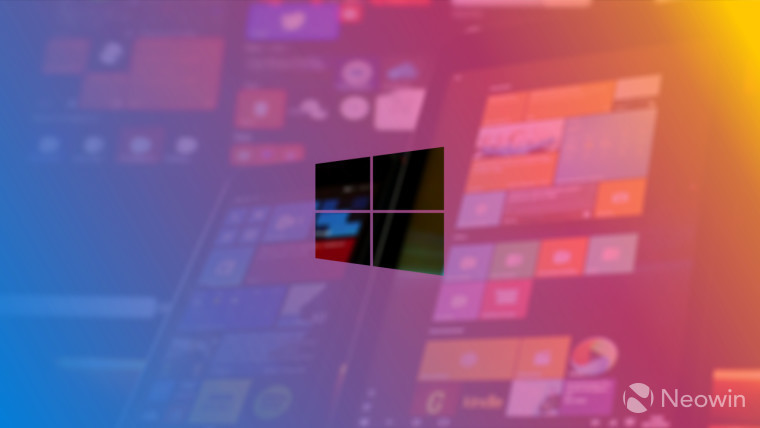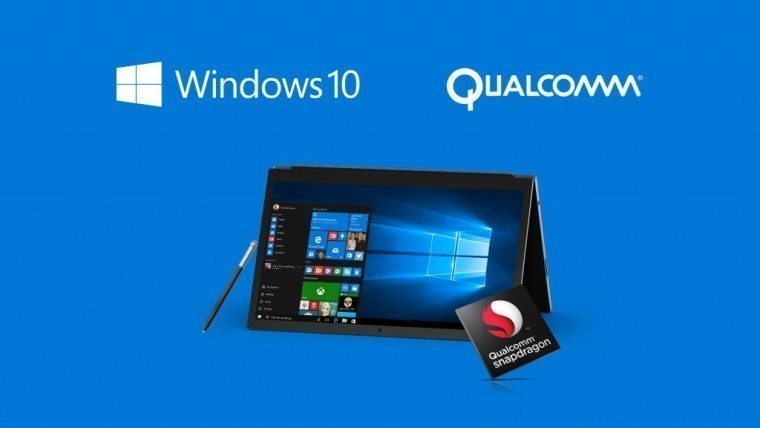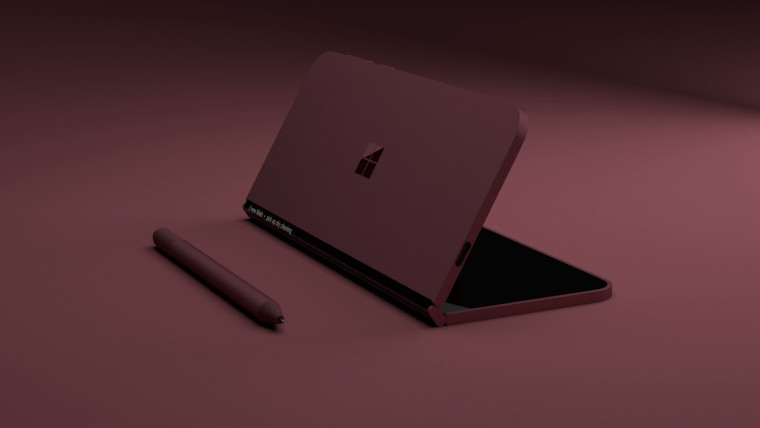
In terms of technology, five years feels like a century. But it was 2012 when Microsoft released the Surface RT, and while the product was a massive flop, it marked a major change to come, especially with the launch of the Intel-powered Surface Pro a few months later.
At the time, the PC market was becoming stagnant, and fewer customers were inclined to buy a new one, given that their five-year-old machine still worked just fine. Surface marked the beginning of Microsoft's quest to invent new form factors for the PC, and its entry into the hardware business.
Fast-forward a few years and the PC market has so much more to offer than just your standard laptops and desktops. Along with tablets with detachable screens like the Surface Pro, we have laptops with 360-degree hinges that can be converted into multiple form factors, the Surface Book that is a fully-powered laptop with a discrete GPU and a detachable screen, phones that can connect to displays and be used like a desktop PC, the world's first untethered holographic computing platform, the Surface Studio that provides an all-in-one at multiple form factors, and more.
While Windows 8 was designed with tablets in mind - and really nothing else - Windows 10 has evolved along with all of these new PCs as well. Detaching the screen or folding back the display immediately gives the user an option for the full-screen Tablet Mode. Windows Ink was introduced in version 1607 in mid-2016, adding pen features throughout the OS that allow you to draw, take notes, write on photos, draw routes in Maps, and more.
By all rights, Microsoft has done quite a bit to revitalize the PC between the years of 2012 and 2016, but what about 2017? There were many that believed that the PC has evolved all that it could. After all, with all of the form factors that now exist, what is there left to do?
With a little help from our friends

2017 was filled with important news from old, long-time partners like Intel, and brand new ones like Qualcomm. Both of these companies were integral to all of the exciting stuff that we have now.
Microsoft's next big PC initiative is going to be Always-Connected PCs, a new range of Windows 10 devices with cellular connectivity, so they're always connected to the internet wherever you are. Of course, PCs with cellular modems are nothing new, but these use Qualcomm's Snapdragon X16 chips, so they can support cellular speeds of up to 1Gbps.
Some of these machines are already on the market, such as Microsoft's own Surface Pro with LTE, and more will be coming next year. In fact, you can also expect to hear more about Always-Connected PCs at CES.

But perhaps we buried the lede here, because there was another huge announcement to come out of Microsoft's partnership with Qualcomm, which is Win32 emulation on Snapdragon 835-powered devices. This functionality was first announced at WinHEC last year, but this month, the two companies finally announced the ASUS NovaGo and HP Envy x2, the first two Windows 10 PCs to use a Snapdragon 835 chipset.
Microsoft's first attempt at getting Windows to run on ARM chips was Windows RT, and as mentioned earlier, it was a spectacular failure. One of the reasons for this is that while it looked exactly like Windows 8 - which wasn't exactly a star in itself - it couldn't run the same apps. Windows on Snapdragon promises to be able to do everything that it can do on an Intel chip.
If you're not the type of person to get excited by Windows running on a new processor architecture (to be clear, we totally are the type of people that get excited by that), that's OK, as it's meant to have little meaning to the end user. When a customer picks up a new ARM-powered Windows 10 PC, the experience should be the same as an Intel-powered one, although the battery life should be much better, and they'll all have gigabit cellular connectivity.
Intel did big things as well
At WWDC 2013, Apple announced a new model of its MacBook Air that gets 12 hours of battery life, due to the new (at the time) fourth-generation Intel 'Haswell' processors. After Haswell promised up to a 50% increase in battery life, Intel seemed to be focused on efficiency after that.
Fifth-generation 'Broadwell' saw the introduction of Core M, a new ultra-low power chip that can power fanless PCs. For sixth-generation 'Skylake', this was expanded to Core m3, m5, and m7, and for 'Kaby Lake', even m5 and m7 have been rebranded to i5 and i7. Some OEMs - like Huawei and Microsoft - have even been able to build laptops with seventh-generation U-series chips without fans in them.
Intel had to compete with ARM processor manufacturers like Qualcomm, Samsung, Nvidia, and more, trying to race to that level of efficiency and better battery life. But it would seem that in 2017, Intel realized that it was never going to win that race.
After all, given the choice between a Snapdragon PC and an Intel PC, assuming that they have the same performance and the former gets much better battery life, most users would pick the Qualcomm machine. With that in mind, Intel made sure that performance wouldn't be equal.
Indeed, after years of focusing on efficiency, Intel finally brought some major performance improvements to its eighth-generation chips. Ever since the introduction of multi-core processors in 2005, laptops have been dual-core and desktops have been quad-core (speaking generally, as larger laptops could be quad-core at times). That's what changed in 2017.
With the eighth-generation 'Kaby Lake R' processors, U-series (Intel's low-power line) laptops were finally quad-core, offering up to a 30% boost in performance. This is a pretty big deal, given that this huge performance increase will be found in virtually all premium laptops and convertibles throughout next year, and has been throughout the tail end of 2017.

Desktop chips, which are codenamed 'Coffee Lake', are also getting more cores. Those are bumped from quad-core to hexa-core, or six cores.
But what about the H-series, Intel's high performance graphics chips? HQ and HK have traditionally been quad-core, and found in more powerful laptops, such as gaming machines. Eighth-generation H-series chips haven't been formally announced yet, but Intel has said that those will still be quad-core; however, for the first time, they'll actually include a dedicated GPU made by AMD.
The new U-series chips are allowing for ultrabooks that are more powerful than ever before. With the upcoming H-series, we'll see gaming PCs that are slimmer than they've ever been. Indeed, for those that want power, this is an exciting time.
AMD adds onto the pressure on Intel
Another reason that Intel needed to provide a boost in performance is that, after years of being second place, AMD finally came out of the gate with a powerhouse. Not only can the Ryzen chips that were announced in February compete with Intel's Core lineup, but they're cheaper too. This even compelled Intel to release a Core i9 chip.

In May, the firm announced its Threadripper CPU, a 16-core beast of a chip with 32 threads for high-end desktop machines. That model costs $999, although the 8-core base model (1900X) only costs $549, an impressive price for such a high-end processor.
Later in the year at a Qualcomm event, AMD announced that it will also be producing chips for Always-Connected PCs, and those devices will use Qualcomm cellular modems. These PCs shouldn't arrive until next year though, and possibly with next-generation processors.
Microsoft made some new hardware too

At an event in New York City in May, Microsoft announced its first Surface device of the year, the Surface Laptop. Coming in four colors, they're certainly sexy machines; however, they don't exactly fit the theme of exciting. They do come with an all-new SKU of Windows 10, called Windows 10 S. The OS only runs apps that come from the Store, and upgrading to Pro is free until March, after which it will be $49.
A few weeks later in Shanghai, the company announced the new Surface Pro. On it's own, this wasn't particularly exciting. There weren't any design changes, and the biggest improvement was probably the seventh-generation Intel processors that were included.
What was more exciting about the new Pro is that for the first time, Microsoft was promising cellular connectivity in a Surface Pro. It was done already in the Windows RT-powered Surface 2 and the Intel-powered Surface 3, but those didn't have the hardware for power users, and users had to toggle between Wi-Fi and cellular, so it wasn't providing that "Always-Connected" experience.
The new Surface Pro with LTE was released for businesses earlier this month, and should be available for consumers next year. It's available right now in the Microsoft Store as a commercial model though.

In October though, Microsoft finally refreshed its aging Surface Book with the Book 2. Along with the new quad-core Intel U-series chips that we talked about above, the Surface Book 2 packs some serious GPU power. The 13-inch model comes with an Nvidia GTX 1050, and the 15-inch model comes with a GTX 1060.
The announcement was exciting on a number of levels. For one thing, OEMs really haven't replicated the form factor of the Surface Book yet as they have with the Pro, so anything that Microsoft does with it is new. In other words, since there was no 15-inch Surface Book, just the idea of a larger Book 2 was something big (terrible pun intended).
But also, you're not likely to find that kind of GPU power in devices of that size, let alone that form factor. There's a GTX 1050 in the Dell XPS 15, but that's a standard laptop and it has a 15.6-inch screen. If you want a laptop with a GTX 1060, you'd need to look at gaming PCs.
Moving into 2018
We're now less than two weeks away from the beginning of CES, and that always means lots of new PCs, along with announcements from Intel and Qualcomm. Intel will announce its new H-series chips, so we can expect new quad-core machines with dedicated graphics throughout the year. Those will be slimmed down, and possibly convertibles.
Intel still hasn't said anything about its eighth-generation Y-series chips (the rebranded Core m-series), so that announcement should arrive at some point. It's unclear what the company plans to do, but with the emphasis on more power, it could be pretty interesting.
Later on next year, we should hear about Intel's upcoming generation of chips, codenamed Cannonlake, which should be built on a 10nm architecture.

As for Qualcomm, the Windows on ARM project is still in its infancy, so there will be a lot of news on that front. The Snapdragon 835-powered machines will begin shipping in the spring, and soon after that, we'll start seeing PCs that are powered by the newly-announced Snapdragon 845 chipset. Presumably, this will work out a lot of kinks that can be expected in first-generation hardware.
AMD has also said that it's onboard with the new Always-Connected PC initiative, and its devices will use Qualcomm's modems. Along with refreshed Ryzen processors, that's another thing you can look forward to moving into the new year.
And of course, there's Microsoft. The next version of Windows 10 is going to include productivity-focused features like Timeline, that allow you go back to things you were previously working on. The one after that, which will likely arrive in fall 2018, will include Sets, a feature that allows you to group apps into tabs like you would do with web pages in a browser.
New hardware from Microsoft is always murky until shortly before its release. A refresh of the Surface Studio seems likely, since the existing one still uses a sixth-generation 'Skylake' processor, and a mobile processor at that. New models of the Laptop, Pro, and Book are all possible, but that could go either way.

There are also rumors of a new Surface device, codenamed Andromeda. This would be the much-anticipated Surface phone, and would have a form factor similar to a type of foldable tablet.
In other words, there's a lot to look forward to in 2018.
Conclusion
Put simply, it's been another big year for PCs, and next year we'll see even more cool stuff.
Always-Connected PCs will be the next wave of portable PCs, and users will be able to be connected wherever they go. This is really exciting, given that previously, PCs with cellular modems were few and far between, and they were pretty expensive too.
Windows on ARM puts Windows 10 onto an entirely new processor architecture. These new devices can get up to weeks of standby battery life, due to ARM's big.LITTLE architecture, which uses low-power, more efficient cores for background tasks.
And of course, companies like Intel and AMD are producing powerful hardware, although those can be used in Always-Connected PCs as well.
In 2018, we'll see many of these ideas - such as ARM PCs - finally see the light of day. Microsoft is continuing to invest in new PC form factors, and we can only wait to see what's next on the horizon.
















77 Comments - Add comment